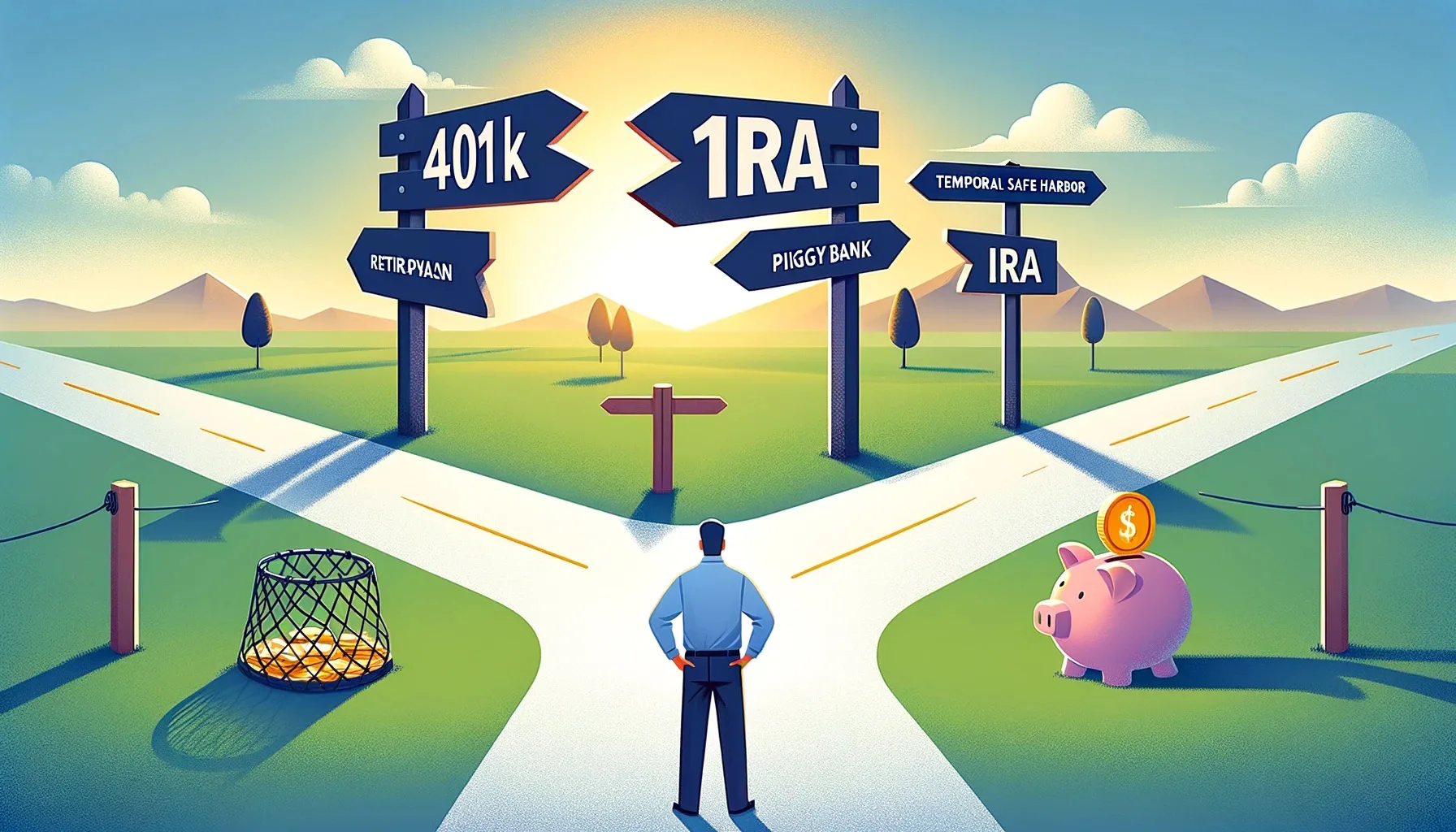Starting a new job brings a mix of excitement and challenges, especially when it comes to understanding and managing your benefits. One frequently encountered issue is the synchronization of 401(k) plans between your former and new employer. This becomes particularly complex when you’re faced with a probationary period at your new job that delays your eligibility for the company’s 401(k) plan, while the rollover window for your old plan is quickly closing. In this article, we’ll dive into strategies for managing this transition period to ensure your retirement savings continue to grow, uninterrupted.
Understanding the 90-Day Probationary Period and the 60-Day Rollover Window
Most companies implement a probationary period to evaluate new hires before offering full employment benefits, including participation in the company’s 401(k) plan. Concurrently, IRS rules provide a 60-day window to rollover your 401(k) funds after leaving your job to avoid penalties and maintain the tax-advantaged status of your savings. Navigating this gap requires careful planning.
Strategies for Bridging the Gap
- Direct Rollover to an IRA: Consider rolling over your old 401(k) into an Individual Retirement Account (IRA). This move not only keeps your savings on a tax-deferred growth track but also offers more control over your investment choices. Additionally, an IRA does not impose any waiting period for contributions or rollovers, providing a seamless transition for your funds.
- Negotiating with Your New Employer: Some employers might allow earlier participation in the 401(k) plan under certain circumstances. It’s worth discussing your situation with your HR department to explore any flexibility in the policy.
- Utilizing a Roth IRA: If you have a Roth 401(k), rolling it over to a Roth IRA could be advantageous. Roth IRAs offer tax-free growth and withdrawals in retirement, and like traditional IRAs, they accept rollovers at any time.
- Parking Your Funds Temporarily: If rolling over to an IRA doesn’t align with your financial strategy, consider temporarily parking your funds in a high-yield savings account or a money market fund. While this approach doesn’t offer the tax advantages of retirement accounts, it keeps your money accessible and earning interest until you can roll it over to your new employer’s 401(k).
Exploring Temporary Safe Harbor Options
While dealing with the gap between your old and new 401(k) plans, it’s crucial to explore all available options that can serve as a temporary safe harbor for your retirement savings. This interim period offers a unique opportunity to reassess your investment strategy and ensure it aligns with your long-term financial goals. Here are some additional strategies to consider:
- Short-term Investment Accounts: Beyond high-yield savings accounts or money market funds, you might consider short-term certificates of deposit (CDs) or Treasury securities. These options can provide slightly higher interest rates than savings accounts, with the trade-off being less liquidity. They’re best suited for individuals who are certain they won’t need to access these funds until they’re eligible to contribute to their new employer’s 401(k) plan.
- Stay with Your Former Employer’s Plan Temporarily: If your account balance allows it, some employers let you maintain your 401(k) with them even after you’ve left the company. This can be a viable short-term solution, allowing your investments to continue growing tax-deferred until you can roll them over into your new employer’s plan or an IRA. However, be mindful of any changes in fee structures or services that might affect your account.
- Financial Planning Consultation: This period can also be an ideal time to consult with a financial advisor. A professional can offer personalized advice, helping you evaluate the pros and cons of each option based on your specific financial situation. They can also assist in developing a comprehensive financial plan that includes your retirement savings, investment strategies, and long-term financial goals.
- Considerations for Employer Stock: If your 401(k) includes company stock, special tax rules may apply, particularly with net unrealized appreciation (NUA) strategies. It may be advantageous, in some cases, to transfer the stock into a taxable account to take advantage of lower tax rates on long-term capital gains. This strategy is complex and should be navigated with the guidance of a tax professional or financial advisor.
Incorporating one or more of these strategies can provide you with the flexibility and security needed during this transitional period. By taking proactive steps, you can protect your retirement savings from potential taxes and penalties while preparing for the next stage of your investment journey.
The gap between a new job’s probationary period and the 60-day 401(k) rollover window requires strategic financial planning. By understanding your options and making informed decisions, you can ensure that your retirement savings continue to grow without interruption. Whether you choose to roll your funds into an IRA, negotiate with your new employer, or temporarily park your funds, the key is to avoid cashing out your 401(k), which could lead to penalties and tax consequences. Your retirement savings are a significant part of your financial future, and with careful planning, you can navigate these transitions smoothly.


